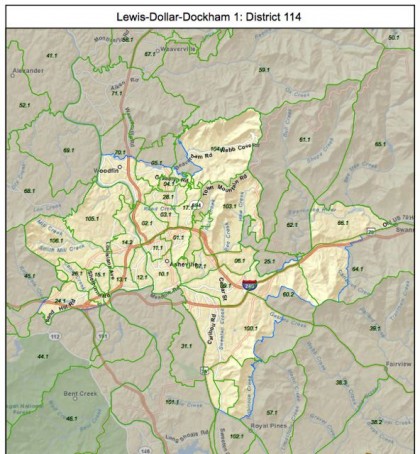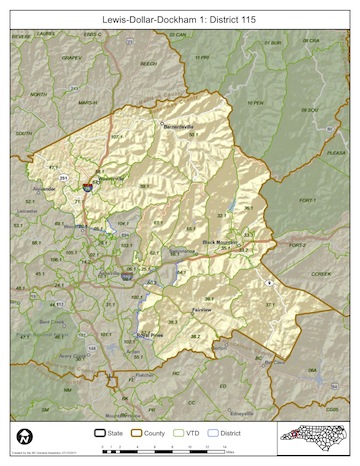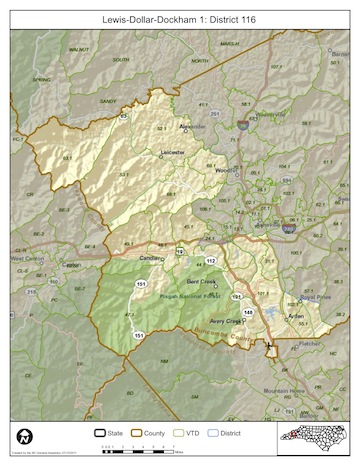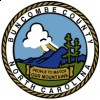For the first time in history, Statehouse districts now apply to the Buncombe County Board of Commissioners. Under the proposed new maps drawn by the first GOP-controlled General Assembly in 140 years, those districts would place several members of the all-Democrat board in the same districts and potentially make it easier for both Republicans and liberals to get elected.
Under the redistricting plan released late in the evening on July 12, Vice Chair Bill Stanley and Commissioner Holly Jones would represent the 114th District, which encapsulates most of Asheville. Commissioners K. Ray Bailey and Carol Peterson would represent the 115th District, which covers most of eastern Buncombe County. Board Chair David Gantt would also reside in the 115th, although the new county election law, ratified by legislators May 19, stipulates that the chairman would continue to be elected by the county as a whole. All the incumbents are up for reelection next year.
The law is also scheduled to expand the board from five to seven members at that time, with two candidates elected to staggered terms from each district. The candidate who receives the most votes from each district will be elected to a four-year term; the second-place candidate will be elected to a two-year term.
While that means that each of the two incumbent commissioners from the 114th and 115th districts could still serve together, they could find themselves fighting it out for the four-year term. And with Democrats outnumbering Republicans by 32,439 to 10,906 in the 114th, it’s almost a sure thing that both commissioners would be from the same party. However, the liberal demographics raise the prospect of a successful challenge by a candidate who stands to the left of the incumbents. And rumors are circulating that Asheville City Council member Brownie Newman may give it a go (at this writing he had not yet filed to run again this year for City Council; the deadline to file is July 15).
The 115th, on the other hand, could prove to be a toss-up, with its 22,594 Democrats, 17,340 Republicans and 15,289 unaffiliated voters.
Meanwhile, two new representatives would be elected from the 116th District, which encompasses west Buncombe and has the most conservative demographic of the three, making it likely that at least one Republican would get elected to the board. That district — represented by Republican Tim Moffitt in the House, would lose 2,704 Democrats under the new maps, bringing the total to 20,198. In accordance with the latest figures from the U.S. Census, the district would also lose 223 Republicans, bringing the total to 18,611.
The 14,786 unaffiliated voters in that district tend to swing Republican, however, according to data from State Board of Elections: In 2008, voters from precincts in the proposed 116th gave John McCain 53.99 percent of their ballots compared to 44.86 percent for President Barack Obama. And they gave Republican gubernatorial candidate Pat McCrory 48.36 percent of their votes compared to 47.80 for Gov. Bev Perdue.
The incumbent commissioners were unanimously opposed to the change to district elections, which was spearheaded by Moffitt. They’re considering a November referendum to re-establish at-large elections before the district elections could take place next year.
Newly proposed 114th District
R
Newly proposed 115th District

Newly proposed 116th District







As I read the headline on this piece — “Proposed commissioner districts could polarize board” — I immediately think “Well, wasn’t that the objective?”
The A-B Tech tax referendum means that all 80 precincts in Buncombe will be voting on November 8 anyway, so as long as we’re at it, I hope to see a referendum on the Commissioners-by-district question. That could help put a lot of this other stuff to rest.
What’s interesting is that this analysis underscores the arguments of the proponents for district elections.
The only two changes on the Commission (as I recall) have been the loss of Keever and Ramsey in recent years – who reside in the 114th and 115th, respectively.
So it will have been at least 12 years since anyone was elected from the 116th district, probably longer.